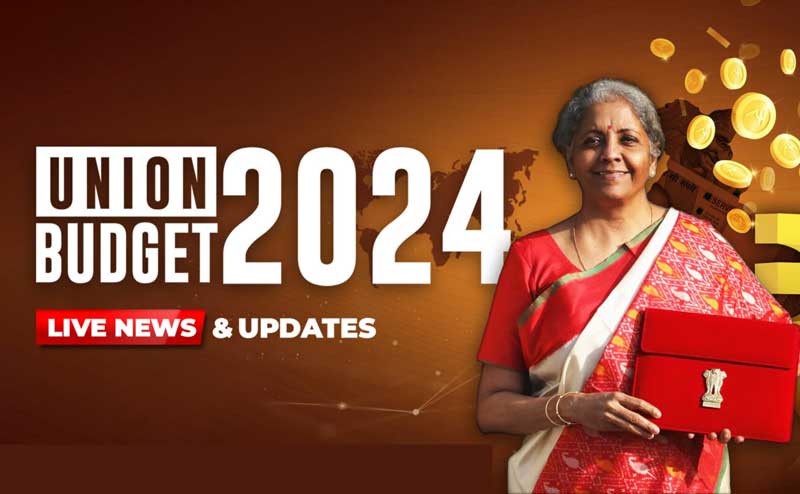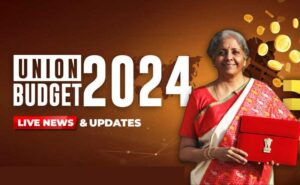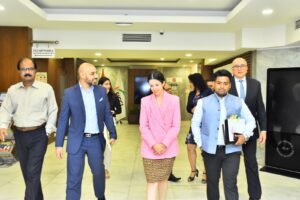Interim Union Budget 2024-25 Analysis
The Finance Minister says the fiscal deficit for 2024-25 stands at 5.1% of GDP, compared to 5.8% in the current financial year. There is no change in tax rates.


The Finance Minister, Ms Nirmala Sitharaman presented the Interim Budget for 2024-25 on February 1, 2024. This will provide funding for the government for a part of the financial year until the main budget is passed after the general elections.
Budget Highlights
- Expenditure: The government is estimated to spend Rs 47,65,768 crore in 2024-25, 6% higher than the revised estimate of 2023-24. Interest payments account for 25% of the total expenditure, and 40% of revenue receipts.
- Receipts: The receipts (other than borrowings) in 2024-25 are estimated to be Rs 30,80,274 crore, about 12% higher than the revised estimate of 2023-24. Tax revenue which forms major part of the receipts is also expected to increase by 12% over the revised estimate for 2023-24.
- GDP: The government has estimated a nominal GDP growth rate of 10.5% in 2024-25 (i.e., real growth plus inflation).
- Deficits: Revenue deficit in 2024-25 is targeted at 2% of GDP. This is lower than the revised estimate of 2.8% in 2023-24. Fiscal deficit in 2024-25 is targeted at 5.1% of GDP, lower than the revised estimate of 5.8% of GDP in 2023-24.
- New Schemes: Rs 70,449 crore has been allocated to the Department of Economic Affairs for New Schemes (details not available). The allocation is for capital expenditure, and accounts for 7.5% of the total capital outlay.
Main tax proposals in the Finance Bill
- Tax rates unchanged: Direct and indirect tax rates have remained unchanged.
- Tax benefits to certain entities extended by another year: Certain direct tax benefits to following entities have been extended until March 2025: (i) startups, (ii) sovereign wealth funds and pension funds, and (iii) some IFSC units. These benefits would have expired in March 2024.
Policy Highlights
- Railways: Three major economic railway corridor programs will be implemented. These are: (i) energy, mineral and cement corridors, (ii) port connectivity corridors and (iii) high traffic density corridors. Forty thousand normal rail bogies will be upgraded to Vande Bharat standards to ensure passenger safety and comfort.
- Housing: An additional two crore houses will be built over the next five years under Pradhan Mantri Awas Yojana-Grameen. A new scheme will be launched to help sections of the middle-class living in rented houses, slums, and unauthorised colonies, to buy or build their own houses.
- Health: Vaccination to prevent cervical cancer will be encouraged for girls between nine and 14 years of age. A new platform, U-WIN, will be rolled out for managing immunisation across the country. Healthcare cover under Ayushman Bharat scheme will be extended to all ASHA workers, and Anganwadi workers and helpers.
- Energy: Rooftop solarisation of one crore households will be taken up. To achieve net-zero by 2070, blending of compressed biogas in CNG and PNG will be mandated in a phased manner. Coal gasification and liquefaction capacity of 100 metric tonnes will be installed by 2030.
- Environment: EV manufacturing and charging infrastructure will be strengthened and expanded. Adoption of E-buses for public transport will be encouraged. Blue economy 2.0 scheme will be launched to restore coastal aquaculture and mariculture. A new scheme will be launched to provide environment friendly alternatives such as biodegradable polymers, bio-plastics and bio-pharmaceuticals.
- Agriculture: Public and private investment will be promoted in post-harvest activities including aggregation, storage, supply chain, processing and marketing. Application of the Nano DAP fertiliser will be expanded in all agro-climatic zones. A programme for supporting dairy farmers will be formulated. PM Matsya Sampada Yojana will be expanded to: (i) enhance aquaculture productivity from three to five tonnes per hectare, (ii) double seafood exports to one lakh crore rupees, and (iii) generate 55 lakh employment opportunities.
- Demographic changes: A high-powered committee will be set up to address challenges arising out of fast population growth and demographic changes.
- Research: To encourage the private sector to scale up research and innovation, a corpus of one lakh crore rupees will be set up. This corpus will provide long-term loans at low or nil interest rates.




